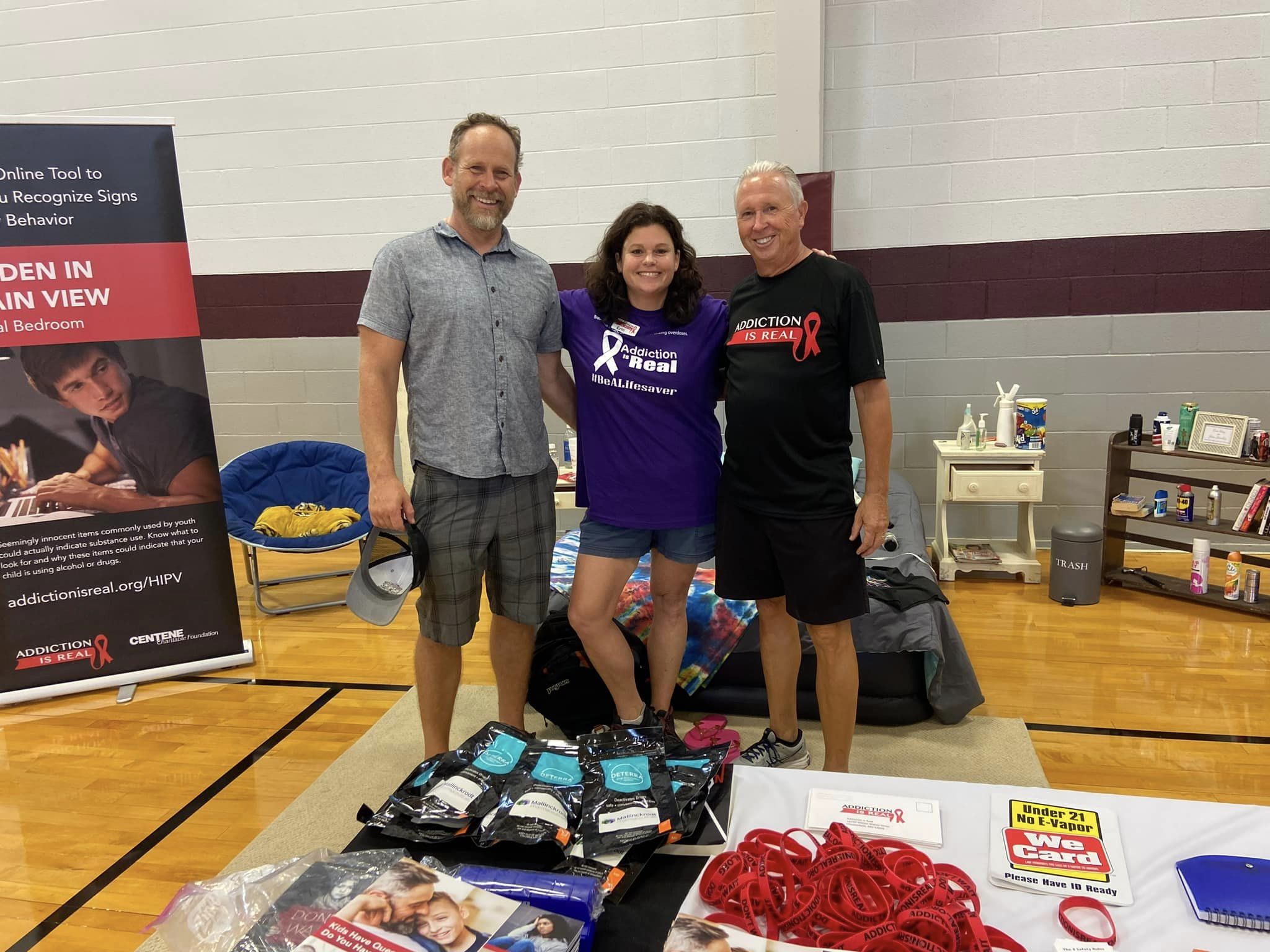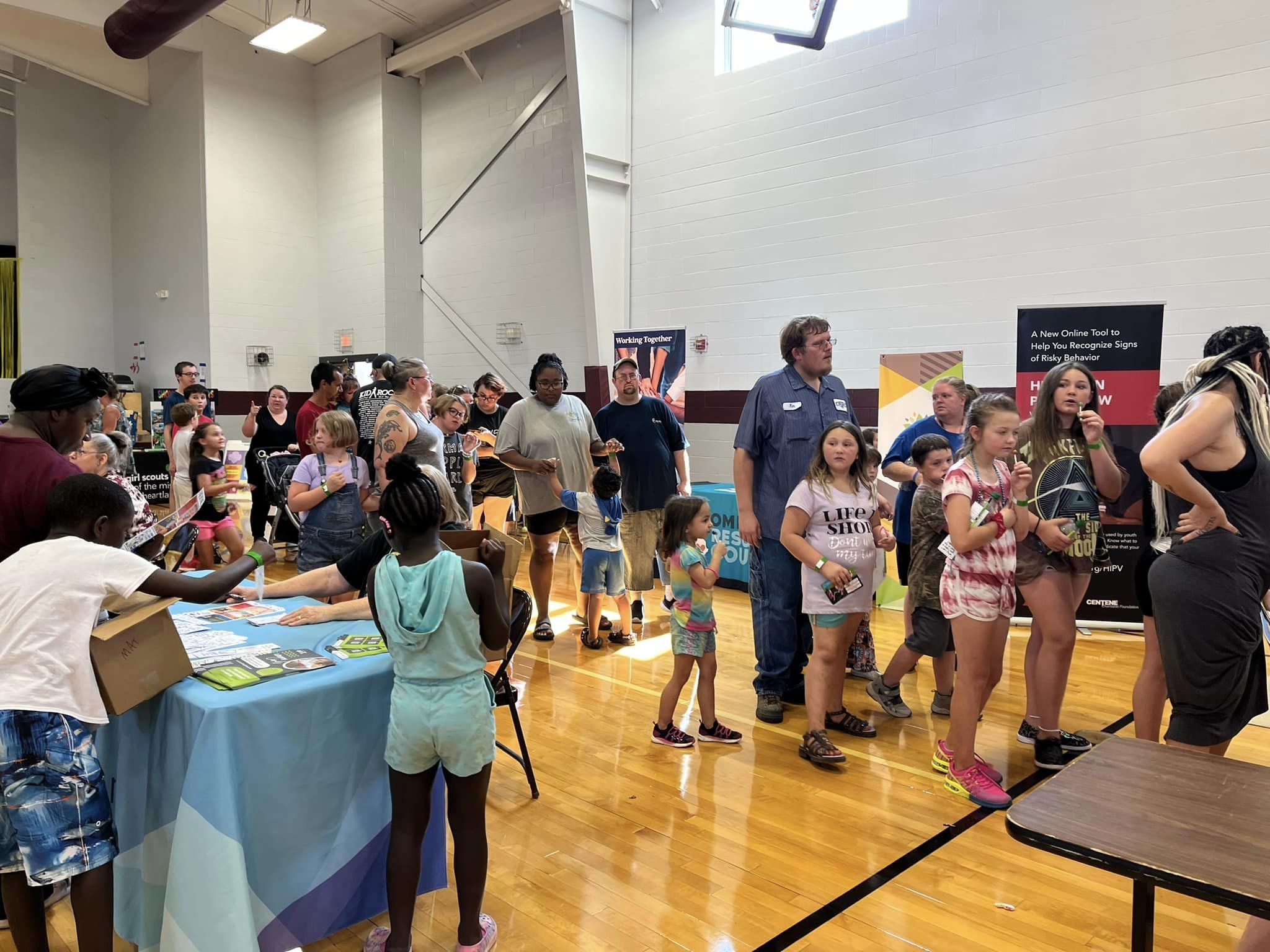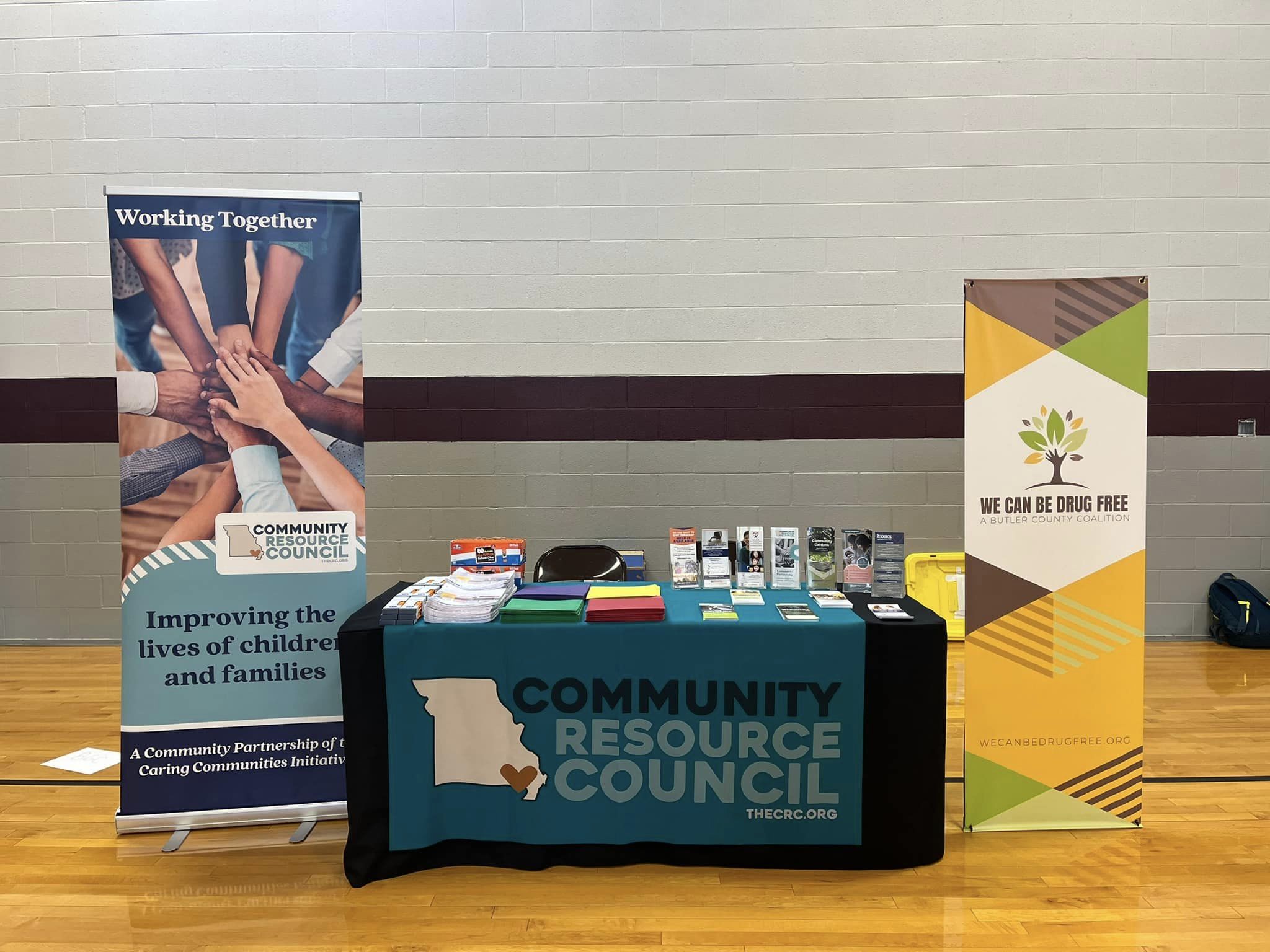|
Back to Success Stories
Hidden In Plain View
Hosted by:
Butler County Community Resource Council

Please briefly describe your Communities Talk activity.
The We Can Be Drug Free Coalition arranged for a local “Hidden In Plain View” demonstration at our local back-to-school fair. There were 624 people who attended the activity, including over 150 families. We were able to set up a booth to provide parents with resources and educational materials related to youth substance use in addition to them having the opportunity to view the “Hidden In Plain View” demonstration and receive a copy of the parent toolkit book from Addiction Is Real. You can view more about the event on our Facebook page.

How does alcohol and other drug misuse affect your community?

Alcohol and drug misuse have a huge effect on our community each year. Our community currently has over 300 children in the foster care system, and the vast majority of those cases are due to caregiver/parental substance misuse. Our community has a general need for prevention. According to the 2022 Missouri Student Survey, 7.1% of students grades 6–12 in Butler County said they have consumed alcohol, and 10.1% of students said that they had used e-cigarettes in the past 30 days. Additionally, 26.7% of the youth under the age of 18 are living in poverty, and 10.1% said that they had seriously considered suicide in the past 12 months (2022 Missouri Student Survey [MSS] Butler). These are major risk factors for substance use, and our coalition is dedicated to preventing youth substance use by reducing risk factors and increasing protective factors in the lives of the youth in our community. A large part of our efforts focuses on educating youth and parents on the harms of youth substance use, while also teaching them the skills needed to effectively monitor their children. The Hidden in Plain View program allowed us to assist parents and equip them with the skills they will need for effective monitoring.

Which prevention strategy(ies), as defined by SAMHSA’s Center for Substance Abuse Prevention, best fit your Communities Talk activity?
- Environmental Strategy - focuses on establishing or changing community standards, codes, and attitudes thereby influencing incidence and prevalence of alcohol and other drug use within the community. The strategy depends on engaging a broad base of community partners, focuses on places and specific problems, and emphasizes public policy.
- Community-Based Process Strategy - focuses on enhancing the capacity of the community to address AOD issues through organizing, planning, collaboration, coalition building, and networking.
- Information Dissemination Strategy - focuses on improving awareness and knowledge of the effects of AOD issues on communities and families through “one-way” communication with the audience such as speaking engagements, health fairs, and distribution of print materials.
- Education Strategy - focuses on “two-way” communication between the facilitator and participants and aims to improve life/social skills such as decision making, refusal skills, and critical analysis.

What goal(s) did you hope to accomplish with your Communities Talk activity?
- Develop strategic plans to reduce and prevent alcohol and/or other drug misuse.

Did you accomplish your goal(s)?
Yes

What challenge(s) did you face in planning your activity this year?
- Needed additional resources to conduct activity

How did you overcome these challenges?
The coalition staff and leadership worked with our local prevention resource center to learn about more grant opportunities to help us fund our activity. The coalition then applied for a mini grant through the Missouri Department of Mental Health to obtain the necessary funding to host this event.

What are your next steps?

- Host follow-up meetings or activities
- Expand our coalition with new partnerships in the community
- Create a public education campaign to raise awareness and/or change behaviors around underage drinking (i.e., create PSAs and other promotional materials)

If you’ve conducted Communities Talk activities in prior years, how has your repeated participation contributed to progress in achieving your prevention goals?
This funding has been foundational in the effort to build our coalition’s capacity to do this work in our community. This funding has allowed us to really begin the conversation and get the community’s attention when discussing such an important and impactful topic. This funding has allowed our coalition to work on projects and bring together key stakeholders to discuss these topics, which eventually led our coalition to be able to apply for larger prevention-type grants for our community. The coalition was awarded a grant from Missouri Department of Mental Health in 2021 and has most recently been recognized as a Drug Free Communities Grantee in 2022.

Organizations that conduct Communities Talk activities often involve other organizations in the planning and execution of events. Please indicate which type(s) of organizations you involved in your activity planning.
- Faith-based based organizations
- Law enforcement
- Youth-led organizations
- Secondary schools
- Elementary schools
- Colleges or universities
- Local chapters of national organizations
- Charitable organizations
- Local businesses
- State and local government agencies (e.g., public health departments)

Which of the following best describes the primary audience(s) for your Communities Talk activity?

How did you reach and engage your primary audience(s) to encourage them to participate in your activity?
We reached our audience by integrating our event with a well-known and attended community event. Our coalition discussed where we would have the most access to parents of school-aged youth, and we considered the back-to-school fair. Our coalition then worked with additional community partners to bring this event to the Butler County Back to School Fair, where there were 624 people in attendance, and over 146 families viewed the display.

Which Communities Talk resources (or other SAMHSA resources) were most helpful for your activity?

- Prevention-related webinars
- StopAlcoholAbuse.gov website
|
|